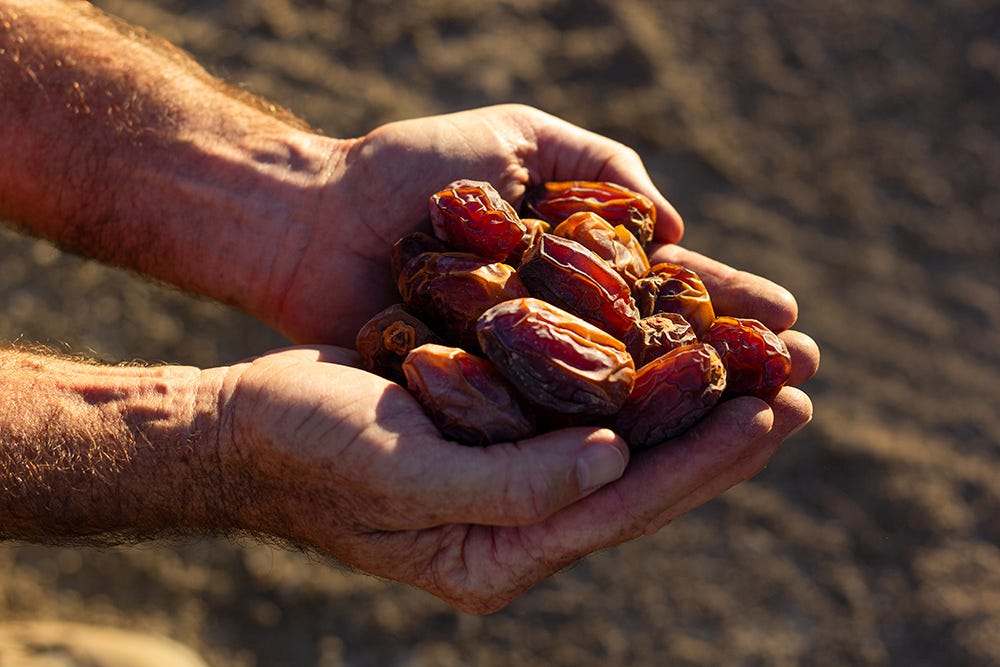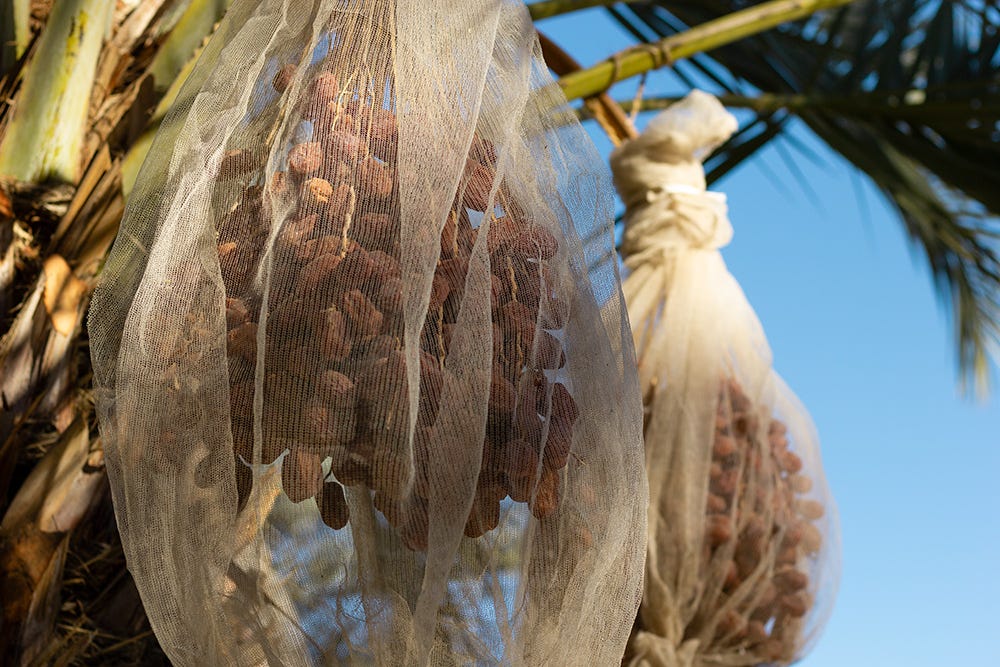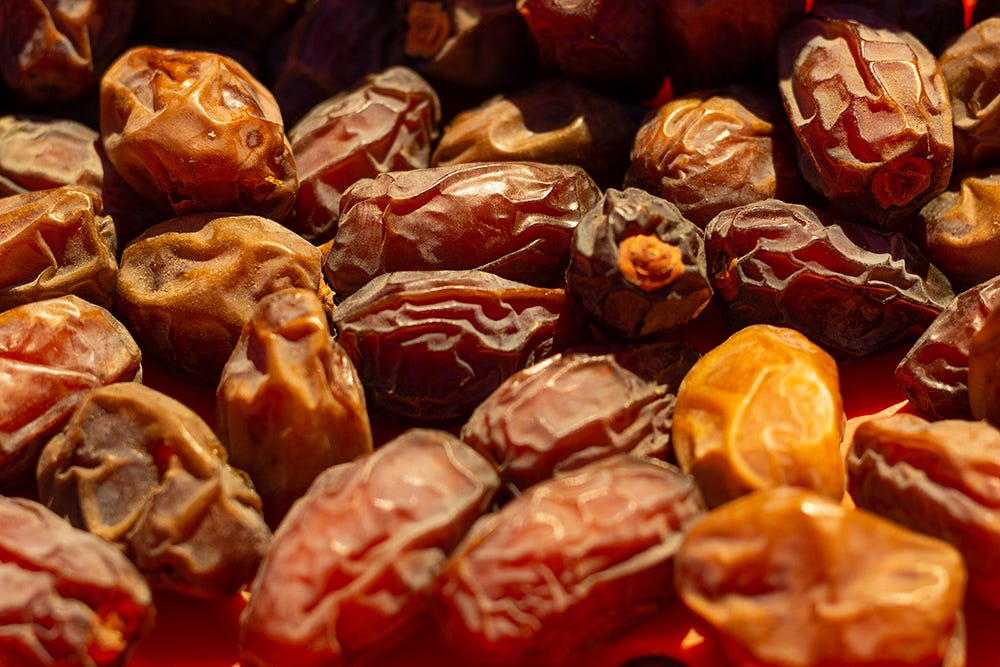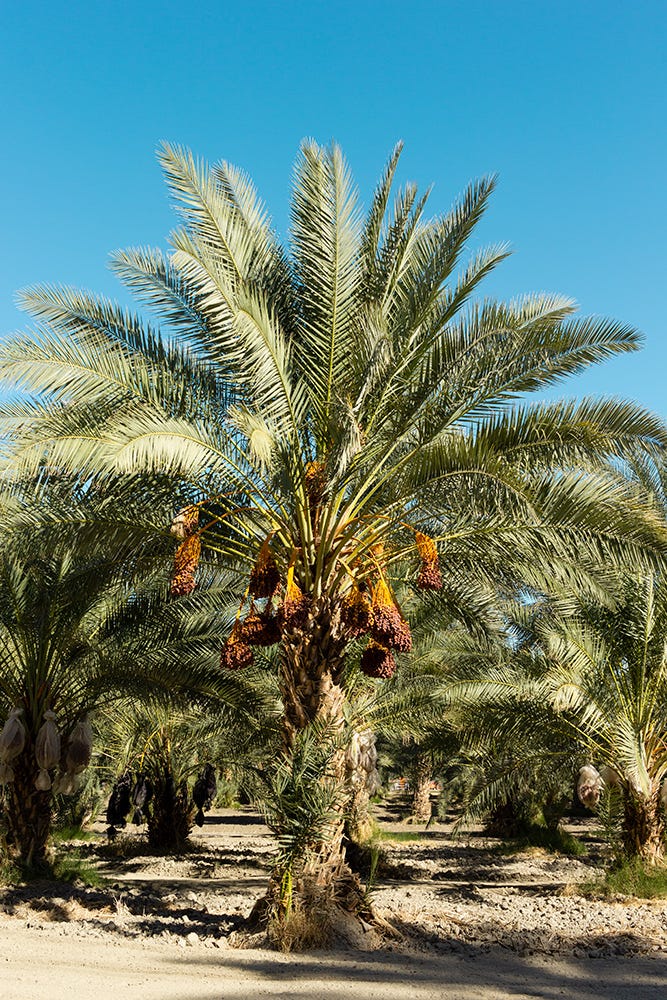Dates - Another Reason to Date Local
Coachella isn’t just famous for its live music scene. It’s also famous for dates. Though they are native to the Middle East, California's Coachella Valley happens to be the only growing region in North America where dates are cultivated.
Dates were first introduced to the arid regions of Mexico and California by the Spanish in 1765, but serious production only began in 1903 with palms from Algeria transplanted to Southern California's desert near Palm Springs, then later to Arizona's Bard Valley bordering on the Colorado River near Yuma. These hot, dry climates are mandatory because dates require at least two consecutive months of median temperatures over 100 degrees in order to mature and ripen properly.
Today, the Coachella Valley boasts more than 9,000 acres under date palm cultivation, producing over 60 million pounds of ripe sweet fruit each year.
Nearly 30 different varieties grow in the date gardens of the Coachella and Bard Valleys, including the Barhi, Halawy, and Zahidi. Two, however, stand out. They are the Deglet Noor and the Medjool. The Deglets are the workhorse date of the food industry, comprising the majority of U.S. production to naturally sweeten baked goods, cereals, and energy bars. On the other hand, the big, moist, ultra-sweet Medjool is the King of Dates, most often eaten whole or pitted and stuffed.
If you are in the mood to frolic among the palm trees and learn about local agriculture along the way, here are a couple of farms in the Coachella Valley:
Where to Spend The Day - Shields Date Garden
Where to Meet A Farmer - Sam Cobb Farms
Where to Get Produce - Temalpakh Farm
Where to Find Exotics - Oasis Date Gardens
As you can imagine, I am pretty smitten with dates, considering they are hyperlocal. So, this month’s newsletter is an ode to all things dates—sweet and savory.
Food For Thought
Words, songs, inspiration and lessons I saved, read, wrote down, and savored this month.
READ - My former employer just switched the flip from plant-based cuisine to regenerative dining.
READ - Baroo gives us a lesson on how to take a break in the hospitality industry.
LISTEN - Learn how to make how to make the apple pie of your dreams with Chef Nicole Rucker of Fat & Flour
Words, Lessons & Inspiration
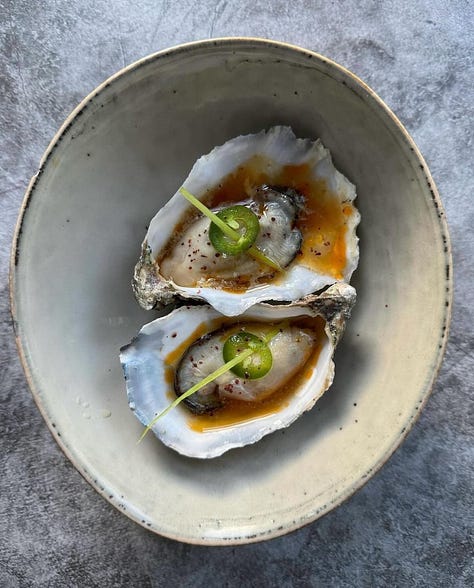


Opportunities
Dates are a tropical stone fruit that comes from the date palm trees that are native to Saudi Arabia, Iran, and Iraq. In the U.S., these trees thrive in warm climates and are grown in California, Florida, and Arizona. Dates are also often used in cooking and baking as a sweetener and are also a good source of nutrients such as fiber, potassium, and iron. But aside from its nutritional value, this stone fruit has a rich history that goes back to around 4000 B.C., with documented use in the Fertile Crescent between Egypt and Mesopotamia.
COOK
PRESERVE
If you have fresh dates that you want to save for later use, you can follow these steps to freeze them properly.
Clean the dates’ surfaces and remove their pits.
Line a baking sheet with parchment paper and place the pitted fresh dates on the sheet slightly apart. Placing the dates one by one on the sheet prevents the fruits from sticking to each other.
Put the lined baking sheet into the freezer for a few hours until the dates become firm.
When the dates are hard and firm, take the baking sheet out from the freezer and transfer the frozen dates into a vacuumed bag or airtight container.
While frozen fresh dates last longer than their fresh and refrigerated counterparts, thawed dates have a softer and mushier texture than fresh ones. Thawed dates are best in recipes where texture isn’t an issue, such as smoothies or chopped into pieces for baking.
STORE
Dates are best stored in the refrigerator in an airtight container to help them retain moisture. They can be stored up to 6 months in the refrigerator, but may lose moisture the longer they sit. Large quantities of dates can also be frozen for up to one year.




